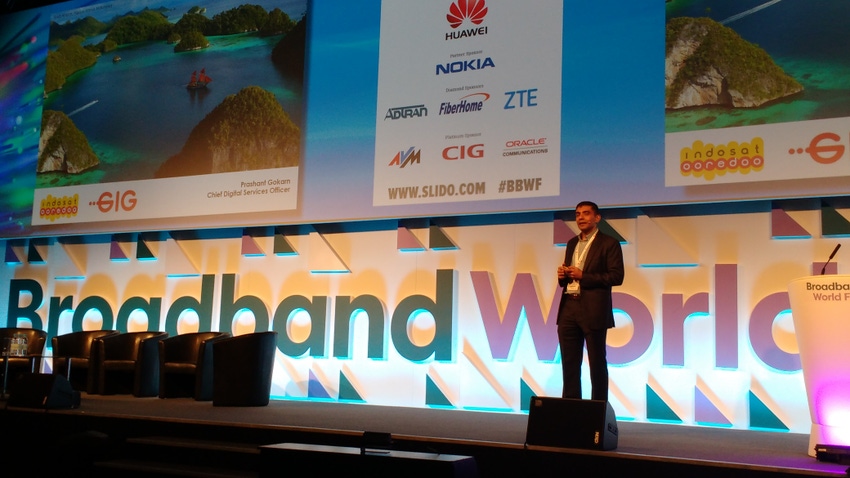Ooredoo reveals the secret to disrupting the fibre norm
How do you develop a traditionally expensive fibre infrastructure proposition in a less affluent market?
October 18, 2016

How do you develop a traditionally expensive fibre infrastructure proposition in a less affluent market?
Indonesia is one of the world’s most populous countries, with somewhere between 250 and 270 million citizens. Unsurprisingly cellular traffic is growing at a phenomenal rate, roughly doubling every six to nine months. So said Prashant Gokarn, Chief Digital Services Officer of challenger fibre player Indosat Ooredoo, who spoke at Broadband World Forum in London this morning.
Gokarn said one of the biggest challenges it faces today is that while traffic is growing at an incredible rate, revenue growth is slowed drastically since almost everyone in the country has a smartphone and video is becoming commoditised. The pressure this puts on the network, however, is considerable, and fibre is being viewed as the most promising method of alleviating the burden.
“When people consume video on their phones they don’t watch a few channels live, they go straight to YouTube,” said Gokarn. “And that’s representative of the change in trend for broadcast, no-one watches things live anymore. Despite being at the lower end of the middle class spectrum, there’s a lot of people who are affluent enough to invest in more quality services and fibre broadband. So is there an appetite for fibre broadband in Indonesia? The answer is yes.”
Not only is there an appetite, but the comparative ARPU models for wireless and fixed offerings between established and emerging markets proves a compelling point.
“The differences in ARPU between Western and emerging markets, the postpaid ARPU is about £25 for cellular and about £20 for wireline,” said Gokarn. “But there’s a massive difference in emerging markets, so it’s about $2.2 per month on wireless and nearly $100 for home broadband.
“So it’s clear, there’s a huge opportunity for the fixed market, but in emerging markets particularly the state-owned incumbent often dominates proceedings. Therefore there’s a need for a clear differentiator. Is it a speed guarantee or service uptime? Or fastest service activation with a transparent process? Or is it training engineering staff who enhance the condition of the apartment when they’re installing fibre? Our engineers now log photographs of the installation on an app which customers can sign off on the app to show they’re happy.
“We’re also looking at opening up a pre-pay fixed service soon, but for now we have to address postpay customers who don’t pay. Other operators cut people off, but we’ll keep them connected and redirect them to a landing page where they can rearrange their payment conditions if they’ve forgotten.”
In terms of rollout, Gokarn says challenger fibre players can’t just spray and pray when it comes to rollout. The “100m dash” strategy targets the tallest and most densely populated buildings in the city first, then gradually expand the coverage radius around them – starting with the first 100m.”
The moral of the story? “Go after the incumbents, they are slow to respond. Challengers have much more enthusiasm and hunger, and incumbents find it next to impossible to compete with aggressive pricing models. That said, we don’t want to overly discount and start a price war.”
You can watch live video streaming of Broadband World Forum 2016 here.
About the Author(s)
You May Also Like











_1.jpg?width=300&auto=webp&quality=80&disable=upscale)


.png?width=800&auto=webp&quality=80&disable=upscale)